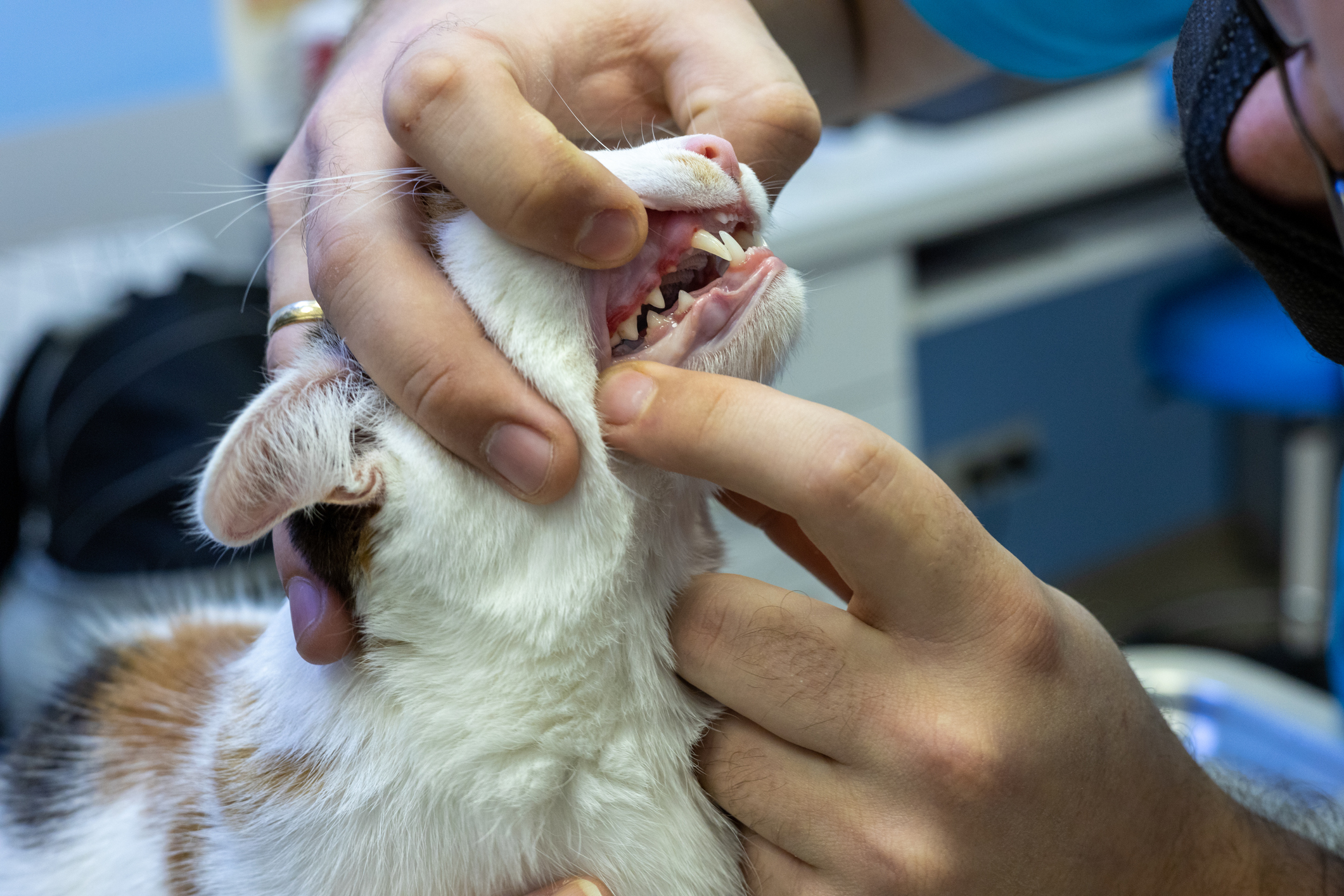5 Common Causes of Chronic Pain in Pets
Doctor of Veterinary Medicine

While efforts are made to answer all questions as quickly as possible, if an immediate answer is required or if your pet is in need of urgent or emergency care, contact your pet's veterinarian immediately.
Doctor of Veterinary Medicine

You will receive an answer from Dr. Lindsay and our vet/tech team as soon as possible, usually the same day.
All answers are provided for informational or educational purposes only, and are intended to be a supplement to, and not a substitute for, the expertise and professional judgment of your pet's veterinarian.
It may be necessary to consult your pet's veterinarian regarding the applicability of any opinions or recommendations with respect to your pet's symptoms or medical condition.
CloseDoctor of Veterinary Medicine

An error has occurred, please reload the page and try again.
CloseDoctor of Veterinary Medicine

While efforts are made to answer all questions as quickly as possible, if an immediate answer is required or if your pet is in need of urgent or emergency care, contact your pet's veterinarian immediately.
There is no answer related to your question

Just like people, dogs and cats can suffer from chronic pain. Ongoing pain can affect your pet every day, making it harder for them to enjoy everything they love, from meals, playtime, and spending time with you and your family.
In recognition of Animal Pain Awareness Month, learn about five common causes of chronic pain in pets, and what you can do to give your pet the best possible quality of life.
1. Joint pain
Did you know that over 80% of dogs and cats will develop osteoarthritis in at least one joint by the time they’re over ten years old? While joint pain is commonly mistaken for slowing down associated with aging, it doesn’t have to be left untreated. Pain management for osteoarthritis can help your pet stay active and may even help slow the progression of degenerative joint degradation. And while you should keep an eye out for signs of joint pain and stiffness as your pet gets older, keep in mind that joint pain can affect pets of any age. Developmental joint issues like hip dysplasia and luxating patella, too, can cause joint pain.
2. Dental issues

Dental visits with a sedated cleaning and x-rays can prevent gingivitis and other causes of chronic dental pain that commonly go unnoticed.
Dental pain is another common cause of chronic pain in pets. Over 80% of dogs and cats will have some form of dental disease by just three years of age. Painful dental issues tend to start with mild givingitis, or inflamed gums, and can quickly advance to severe periodontitis, tooth loss, tooth resorption and abscesses. What may seem like a simple case of halitosis is usually a sign that harmful bacteria is brewing at your pet’s gumline. Left untreated, pets with dental pain tend to have trouble eating and may become less playful when it becomes painful to chew or carry toys. Over time, oral bacteria can spread to other parts of the body, including the heart, liver, kidneys, and brain.
3. Inflammatory bowel disease
Pets with inflammatory bowel disease (IBD) may have frequent flare-ups of pain and gastric upset without any known cause. This condition typically causes painful inflammation of the stomach and gut lining, usually with persistent diarrhea and vomiting. While most dogs and cats will experience an upset stomach at some point, prolonged stomach issues are not typical. In some cases, IBD is linked to an infection, parasite, or even a sensitivity to one or more ingredients in the pet’s food, and it’s commonly concurrent with chronic pancreatitis.
4.Neuropathic Pain
Chronic pain associated with nerve damage can manifest as sharp pain, tingling, numbness, postural changes, and repetitive licking. It’s seen in dogs and cats after serious traumatic injuries, like getting hit by a car, as well as repeated trauma like pulling at a leash. It’s also seen in pets with degenerative disorders like intervertebral disc disease (IVDD) or “slipped disc”.
5. Cancer
While not all forms are initially painful, unexplained chronic pain can be a symptom of undiagnosed cancer. Cancer pain is typically associated with a mass applying pressure to nerves, organs, or bones. The pain may be persistent or it may come and go. Tumors that affect the bones or joints may affect mobility, while those on lymph nodes or internal organs may cause other signs of cancer in pets like changes in appetite, digestive upset, difficulty breathing, and unusual odors or discharge. While unexplained pain and other symptoms are often associated with health issues other than cancer, it’s crucial to see your veterinarian as soon as possible to rule out tumors and other serious conditions.
Care for Pets with Chronic Pain
Dogs and cats cannot tell us when and where they’re hurting. They depend on us to pay close attention to their behaviors and take action when something isn’t right.
While pain is an inevitable part of life, and can serve the protective purpose of signaling when we need to slow down and rest, chronic pain is maladaptive. That means it does not serve a useful purpose and can actually slow healing, prevent exercise, and negatively affect your pet’s quality of life.
Chronic pain can be managed with over the counter pain medication and topical remedies for pets. Just make sure you only use products that have been developed for pets, as many medications for humans contain components that are toxic to dogs and cats.
If your pet’s pain persists, do not hesitate to see your veterinarian or talk to a vet online. There’s no need to wait until your pet’s pain is severe to seek pain management. Pain management, from pain medication for pets to therapies like acupuncture, massage, water therapy, and more can contribute to helping your pet live a longer, healthier, happier life.
VISION
Every pet deserves to live a long, happy, healthy life.
 Swipe
Swipe


















